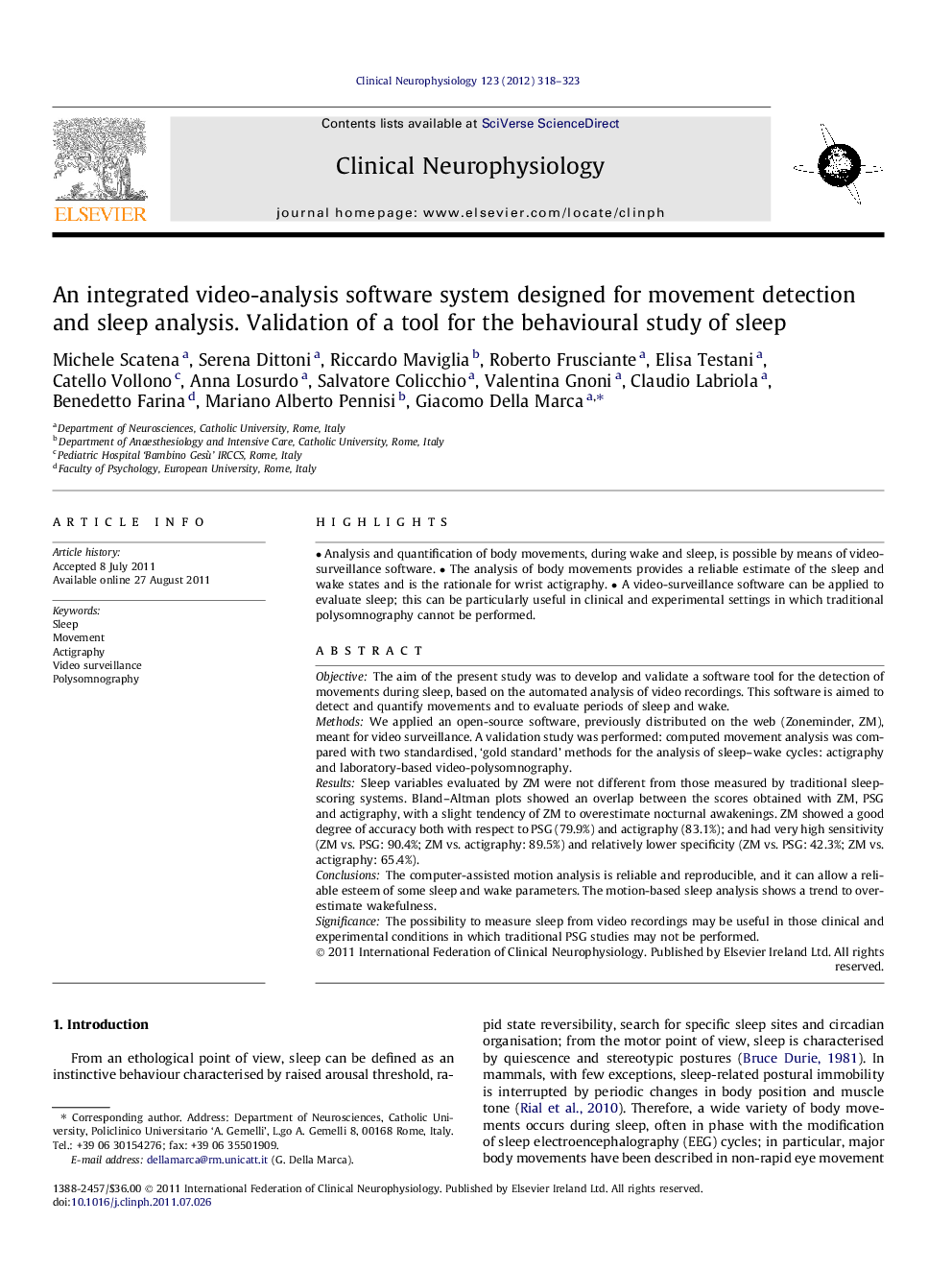| Article ID | Journal | Published Year | Pages | File Type |
|---|---|---|---|---|
| 3045630 | Clinical Neurophysiology | 2012 | 6 Pages |
ObjectiveThe aim of the present study was to develop and validate a software tool for the detection of movements during sleep, based on the automated analysis of video recordings. This software is aimed to detect and quantify movements and to evaluate periods of sleep and wake.MethodsWe applied an open-source software, previously distributed on the web (Zoneminder, ZM), meant for video surveillance. A validation study was performed: computed movement analysis was compared with two standardised, ‘gold standard’ methods for the analysis of sleep–wake cycles: actigraphy and laboratory-based video-polysomnography.ResultsSleep variables evaluated by ZM were not different from those measured by traditional sleep-scoring systems. Bland–Altman plots showed an overlap between the scores obtained with ZM, PSG and actigraphy, with a slight tendency of ZM to overestimate nocturnal awakenings. ZM showed a good degree of accuracy both with respect to PSG (79.9%) and actigraphy (83.1%); and had very high sensitivity (ZM vs. PSG: 90.4%; ZM vs. actigraphy: 89.5%) and relatively lower specificity (ZM vs. PSG: 42.3%; ZM vs. actigraphy: 65.4%).ConclusionsThe computer-assisted motion analysis is reliable and reproducible, and it can allow a reliable esteem of some sleep and wake parameters. The motion-based sleep analysis shows a trend to overestimate wakefulness.SignificanceThe possibility to measure sleep from video recordings may be useful in those clinical and experimental conditions in which traditional PSG studies may not be performed.
► Analysis and quantification of body movements, during wake and sleep, is possible by means of video-surveillance software. ► The analysis of body movements provides a reliable estimate of the sleep and wake states and is the rationale for wrist actigraphy. ► A video-surveillance software can be applied to evaluate sleep; this can be particularly useful in clinical and experimental settings in which traditional polysomnography cannot be performed.
